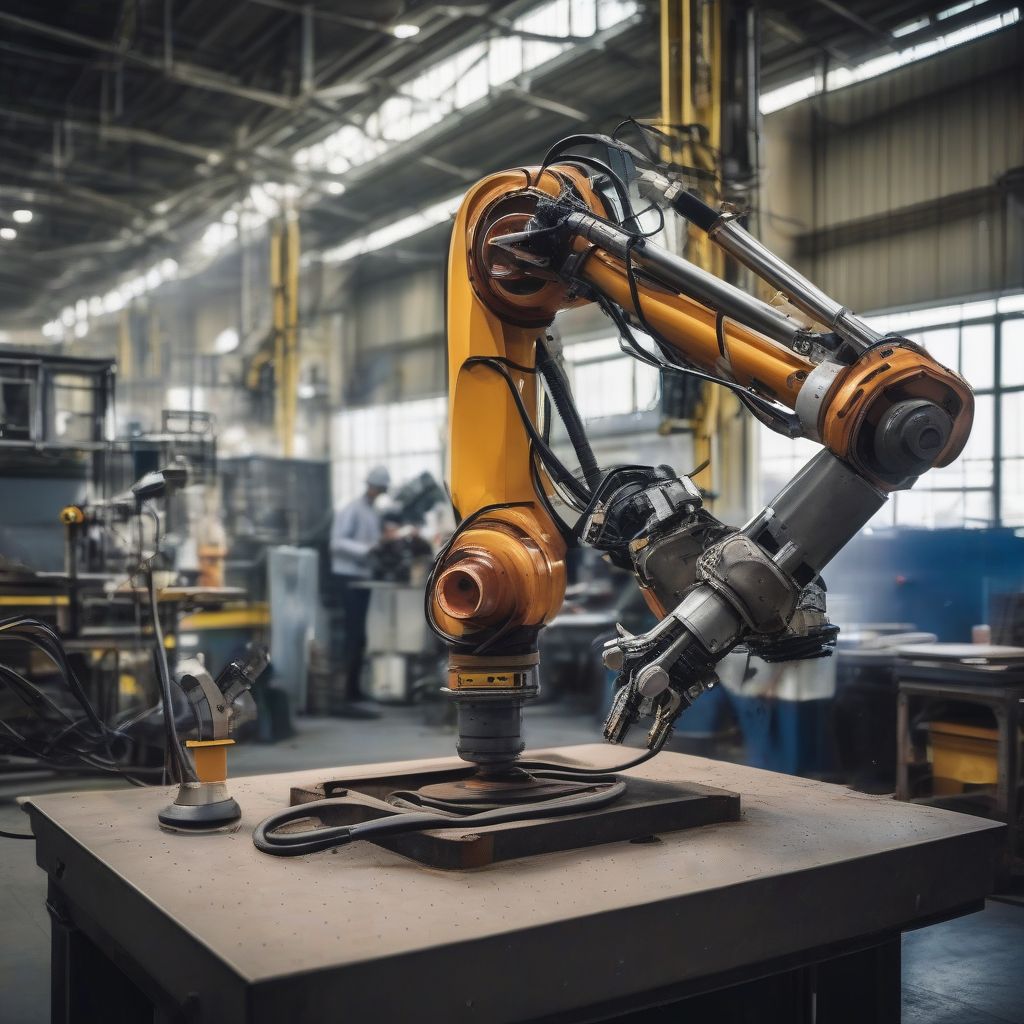Imagine a world where factories hum with tireless, precise robots, working in perfect harmony with their human counterparts. This isn’t science fiction; it’s the reality of modern manufacturing, rapidly being reshaped by the robotic revolution. From automotive assembly lines to electronics production, robots are changing how things are made, offering unprecedented levels of efficiency, safety, and flexibility.
The Rise of the Machines: Understanding the Robotics Boom
The manufacturing industry has always been at the forefront of technological advancement, and the integration of robotics is the next logical step in this evolution. But why now? Several factors have converged to accelerate the adoption of robotics:
- Advancements in Technology: Robots are becoming more sophisticated, affordable, and user-friendly. We’re seeing breakthroughs in areas like artificial intelligence (AI), machine learning, and sensor technology, enabling robots to perform increasingly complex tasks.
- The Need for Efficiency: In today’s globally competitive market, manufacturers are under constant pressure to produce high-quality goods at the lowest possible cost. Robots offer a way to boost productivity, reduce waste, and improve overall efficiency.
- Addressing Labor Shortages: Many industries face challenges finding skilled labor. Robots can bridge this gap by taking on repetitive, physically demanding tasks, allowing human workers to focus on more specialized roles.
The Multifaceted Impact of Robotics on Manufacturing
The influence of robotics extends to every corner of the manufacturing landscape:
1. Enhanced Productivity and Output
Robots can work continuously without breaks or fatigue, significantly increasing production rates. This non-stop operation translates into faster turnaround times and the ability to meet growing customer demands.
2. Improved Quality and Precision
Robots excel at performing repetitive tasks with a high degree of accuracy and consistency. This precision minimizes errors and leads to higher-quality products, reducing defects and rework.
3. Increased Safety for Human Workers
Robots are increasingly deployed in hazardous environments or for tasks that pose risks to human health. This shift towards robotic automation helps create safer workplaces and reduces the likelihood of accidents.
4. New Opportunities for Skilled Labor
Contrary to fears of job displacement, robotics is creating new opportunities for skilled technicians, programmers, and engineers who can design, operate, and maintain these advanced systems.
 Robotic Arm in a Factory
Robotic Arm in a Factory
Real-World Applications: Where Robots are Making a Difference
Let’s step onto the factory floor and see how robots are being deployed across various industries:
- Automotive Manufacturing: Robots are indispensable in car assembly plants, performing tasks like welding, painting, and parts installation with speed and accuracy.
- Electronics Production: The intricate assembly of smartphones, computers, and other electronic devices benefits greatly from the dexterity and precision of robotic systems.
- Food and Beverage Processing: Robots handle tasks like packaging, sorting, and even food preparation, ensuring hygiene and efficiency in food production lines.
- Pharmaceutical Manufacturing: The precise handling and packaging of pharmaceuticals are critical, and robots play a vital role in maintaining quality control and sterility.
Looking Ahead: The Future of Robotics in Manufacturing
The integration of robotics into manufacturing is still in its early stages, and the future holds exciting possibilities:
- Collaborative Robots (Cobots): These robots are designed to work safely alongside humans, enhancing productivity without replacing human workers entirely.
- AI-Powered Robotics: As artificial intelligence and machine learning advance, robots will become increasingly autonomous, capable of learning from data and adapting to changing environments.
- Data-Driven Manufacturing: Robots are generating vast amounts of data that can be leveraged to optimize processes, predict maintenance needs, and improve overall efficiency.
Conclusion: Embracing the Robotic Revolution
The transformation of manufacturing through robotics is undeniable. While some may view this shift with apprehension, it’s crucial to recognize the immense opportunities it presents. By embracing these advancements, manufacturers can unlock new levels of productivity, efficiency, and innovation, paving the way for a more competitive and technologically advanced future.
What are your thoughts on the role of robotics in manufacturing? Share your insights and join the conversation about this exciting technological revolution!
[amazon bestseller=”Robotics”]
For further exploration into the latest advancements in robotics, check out these articles:
